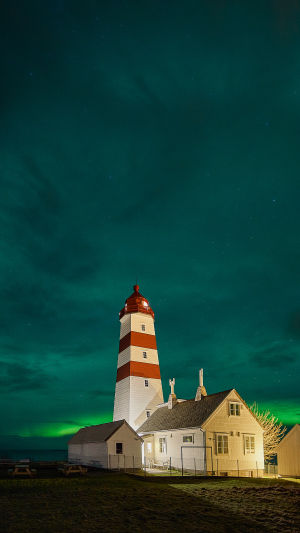The earliest known lighthouse was built in 270 BC by King Ptolemy II of Egypt at the eastern end of the island of Pharos in the port of Alexandria.
This lighthouse, known as the Lighthouse of Alexandria, was one of the Seven Wonders of the World and stood for 1,500 years before being damaged by earthquakes and sinking into the sea in 1480.
Lighthouses have long been considered romantic and symbolic places. They evoke man's vulnerability in the face of nature's power and have been associated with concepts such as solitude, hope, and eternity by poets.
Despite advancements in technology and automation, lighthouses continue to hold significance as a guiding light for those lost at sea.
A lighthouse is a tower-shaped beacon built near key waterways, such as coastlines, harbors, or rivers, and serves as a fixed navigational aid for ships. Reykjanes Lighthouse, located on the Reykjanes peninsula in Iceland, is the oldest and most famous lighthouse in the country.
The original lighthouse was built in 1878 but was destroyed in an earthquake in 1886.
The current lighthouse, built in 1929, is made of concrete to withstand earthquakes and stands 31 meters tall. It is one of the few lighthouses in Iceland that still has a permanent guardian.
Iceland has a total of 104 lighthouses along its 5,000 kilometers of coastline. Many of them are small or in disrepair, but they hold historical significance as relics of Iceland's fishing industry and seafaring heritage.
In addition to their historical and cultural significance, lighthouses also play an important role in modern navigation. Today, ships are equipped with electronic navigation systems, but lighthouses still serve as a backup in case of system failure or power loss.
They also act as a warning to ships of potential dangers, such as rocks or shallow waters.
Many lighthouses have been converted into museums or tourist attractions, allowing visitors to learn about the history of seafaring and the role of lighthouses in navigation.
Some lighthouses, such as Reykjanes Lighthouse, also offer tours where visitors can climb to the top and enjoy the breathtaking views.
In addition, many lighthouses also have become popular spots for photography and artists, who have been attracted to the natural beauty of the sites and the historic architecture of the lighthouses themselves.
In conclusion, Lighthouses are a fascinating symbol of human ingenuity and determination in the face of nature's challenges. They have played an important role in human history and continue to do so today.
They are not only a guide for ships and boats, but also a popular tourist attraction, a source of inspiration for artists, and a window into the past.





